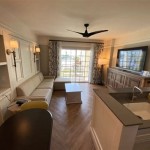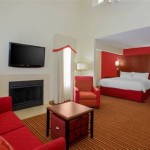Master Bedroom With Sitting Area Layout: Enhancing Relaxation and Functionality
A master bedroom serves as a personal sanctuary, a space for relaxation and rejuvenation. Incorporating a sitting area within the master bedroom elevates its functionality, providing a dedicated space for reading, unwinding, or simply enjoying a quiet moment. Designing a master bedroom with a sitting area requires careful consideration of space, layout, and style to create a cohesive and aesthetically pleasing environment. This article explores various layouts and design principles for integrating a sitting area into a master bedroom, focusing on optimizing space and enhancing the overall ambiance.
The size and shape of the master bedroom are primary determinants in the type and configuration of the sitting area. A larger room offers greater flexibility, allowing for distinct zones and more substantial furniture. Conversely, a smaller master bedroom necessitates a more compact and strategic approach to maximize the available space without compromising the bedroom's primary function as a sleeping area. Regardless of size, thoughtful planning is essential to ensure the sitting area complements the bedroom's overall design and enhances its utility.
Layout Considerations and Space Optimization
Effective layout planning is crucial for successfully integrating a sitting area into a master bedroom. The primary consideration is traffic flow; the sitting area should be accessible without disrupting the main sleeping area. One common approach is to position the sitting area near a window, capitalizing on natural light and offering a pleasant view. Another strategy is to define the sitting area using rugs, furniture placement, or slight changes in flooring or wall color, creating a visual separation without requiring structural alterations.
In larger master bedrooms, the sitting area can be positioned at the foot of the bed, creating a natural transition zone. This configuration works particularly well when the bed is centered in the room. Alternatively, a sitting area can be situated along a wall opposite the bed, providing a clear separation between the sleeping and relaxation zones. This layout allows for greater privacy and a more distinct sense of purpose for each area.
For smaller master bedrooms, space optimization is paramount. Utilizing multi-functional furniture, such as ottomans with built-in storage or a small loveseat that can double as a daybed, can maximize the utility of the sitting area without overwhelming the space. Wall-mounted shelves and floating desks can also provide storage and surface space without occupying valuable floor area. The key is to select furniture that is appropriately scaled to the room and serves multiple purposes.
Strategic use of mirrors can also enhance the perception of space in a smaller master bedroom. A large mirror placed opposite a window can reflect natural light, making the room feel brighter and more open. Additionally, mirrors can be used to create visual illusions, subtly expanding the perceived size of the sitting area.
Another space-saving technique involves utilizing vertical space. Floor-to-ceiling bookshelves or decorative shelving units can provide ample storage and display space, drawing the eye upward and creating a sense of height. This can be particularly effective in rooms with lower ceilings, as it can visually elongate the space.
Furniture Selection and Arrangement
The furniture chosen for a master bedroom sitting area should be comfortable, functional, and aesthetically consistent with the overall design of the room. The size and style of the furniture should be carefully considered to ensure it complements the space and enhances the ambiance. Common furniture pieces include armchairs, loveseats, coffee tables, side tables, and ottomans.
Armchairs are a versatile choice for a sitting area, providing comfortable seating for reading or relaxing. Selecting armchairs with different styles and textures can add visual interest to the space. For example, a tufted armchair can create a more formal and sophisticated look, while a more casual armchair with soft cushions can evoke a sense of relaxation and comfort.
A loveseat can provide more seating space than armchairs, making it a good option for couples or individuals who enjoy entertaining. When selecting a loveseat, consider the scale of the room and choose a size that is proportionate to the available space. A loveseat with clean lines and a neutral color can provide a versatile foundation for the sitting area, allowing you to add pops of color and personality with throw pillows and blankets.
Coffee tables and side tables are essential for providing a surface for drinks, books, and other items. A coffee table should be placed within easy reach of the seating, and its size should be proportionate to the size of the seating area. Side tables can be placed next to armchairs or loveseats, providing additional surface space and creating a more layered and inviting look.
Ottomans are a versatile addition to a sitting area, serving as footrests, extra seating, or even coffee tables. An ottoman with built-in storage can provide additional functionality, allowing you to store blankets, pillows, or other items. When selecting an ottoman, consider its size, shape, and upholstery to ensure it complements the other furniture in the sitting area.
The arrangement of furniture in the sitting area should promote conversation and comfort. Arranging armchairs and loveseats facing each other can create a more intimate and inviting space. Adding a rug beneath the seating area can define the space and anchor the furniture, creating a cohesive and visually appealing look. Experimenting with different furniture arrangements can help determine the most comfortable and functional layout for the space.
Lighting, Décor, and Ambiance
Lighting plays a crucial role in creating the desired ambiance in a master bedroom sitting area. A combination of ambient, task, and accent lighting is essential for providing adequate illumination and creating a layered and inviting atmosphere. Ambient lighting provides overall illumination, while task lighting is used for specific activities such as reading, and accent lighting is used to highlight architectural features or artwork.
Ambient lighting can be achieved through the use of overhead fixtures, such as chandeliers or pendant lights. Dimmers can be installed to control the intensity of the light, allowing you to adjust the ambiance to suit your mood. Task lighting can be provided by table lamps or floor lamps, which can be positioned next to armchairs or loveseats to provide focused illumination for reading. Accent lighting can be achieved through the use of wall sconces or spotlights, which can be used to highlight artwork or architectural details.
The décor in a master bedroom sitting area should reflect the personal style and preferences of the occupants. Artwork, throw pillows, blankets, and accessories can be used to add color, texture, and personality to the space. The key is to select décor items that are aesthetically consistent with the overall design of the room and create a cohesive and inviting look.
Artwork can be a focal point in the sitting area, adding visual interest and personality to the space. Choose artwork that reflects your personal taste and complements the color scheme of the room. Consider the size and scale of the artwork to ensure it is proportionate to the space. A large statement piece can create a dramatic impact, while smaller pieces can be grouped together to create a gallery wall.
Throw pillows and blankets are essential for adding comfort and texture to the sitting area. Choose throw pillows and blankets in a variety of colors, patterns, and textures to create a layered and inviting look. Experiment with different combinations to find the perfect balance of style and comfort.
Accessories, such as candles, plants, and books, can add the finishing touches to the sitting area. Candles can create a warm and inviting ambiance, while plants can add a touch of nature and freshness to the space. Books can be displayed on shelves or coffee tables, adding visual interest and creating a sense of intellectual curiosity.
Ultimately, the design of a master bedroom with a sitting area should prioritize comfort, functionality, and personal style. By carefully considering the layout, furniture selection, lighting, décor, and ambiance, it is possible to create a space that is both aesthetically pleasing and conducive to relaxation and rejuvenation. The goal is to create a personal sanctuary that reflects the unique needs and preferences of the occupants, enhancing their overall well-being and quality of life.

Before After Inviting Large Master Bedroom Design Decorilla Online Interior

Bedroom Layout Ideas Design The Perfect Retreat

18 Master Bedroom Design Ideas To Create An At Home Escape Decorilla Online Interior
:strip_icc()/ReagenTaylorPhotography-d6d99295d6c84b468d8c12dfc0a0386b.jpg?strip=all)
10 Beautiful Bedroom Sitting Area Ideas

5 Primary Suites That Showcase Functionality And Features

28 Best Master Bedroom With Sitting Area Ideas For 2025 Decor Home

Master Bedroom Sofa Design Ideas

Master Bedroom Sitting

32 Gorgeous Master Bedrooms With Outdoor Spaces

18 Master Bedroom Design Ideas To Create An At Home Escape Decorilla Online Interior
See Also








